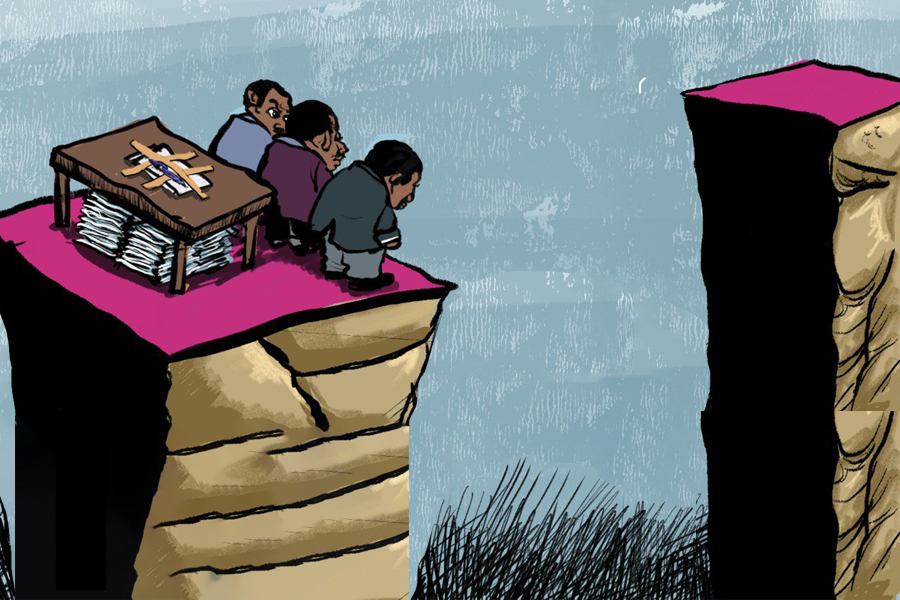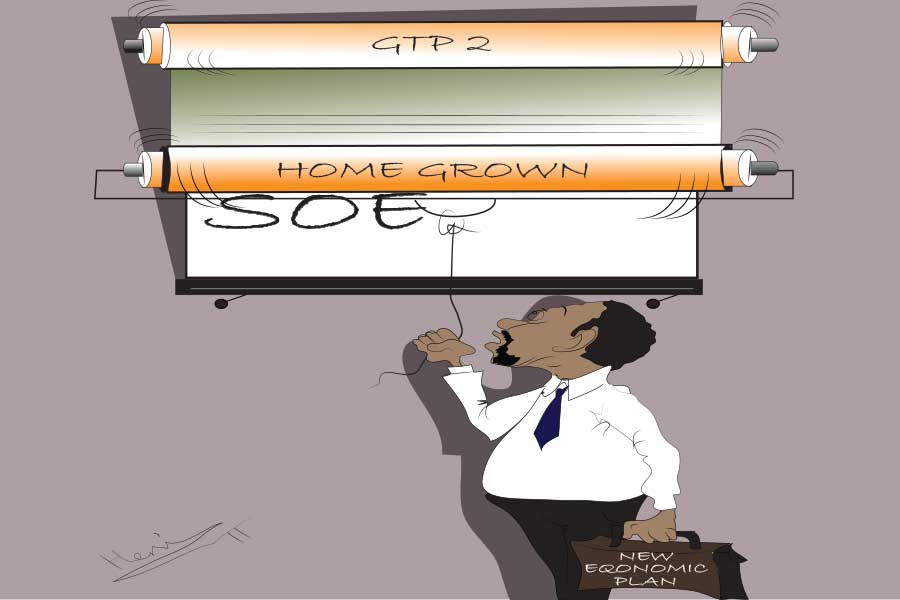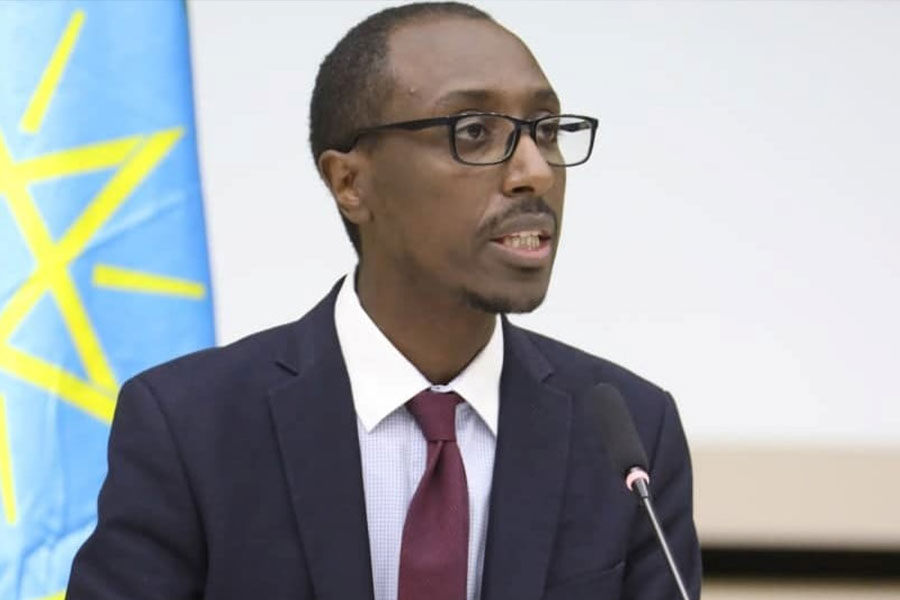
Fortune News | Oct 13, 2024
Oct 30 , 2022
Mariana Mazzucato is a professor of economics teaching innovation and public value at University College London and is closely linked to the World Economic Forum. She is a published author of books, including her recent title" Mission Economy. An Italian native, her work on dynamics of technological change, the role of the public sector in innovation, and the concept of value in economics earned her a name as one of the "most important thinkers about innovation". In her interview with Project Syndicate, she discussed how to address growing global inequalities and whether governments' role in an economy stifles the private sector. She described this view as "a misconception."

Project Syndicate: From the start of your recent book, Mission Economy: A Moonshot Guide to Changing Capitalism - you argue that changing capitalism will require us to overhaul “how government is structured,” “how business is run,” and “how public and private organizations interrelate.” You also acknowledge that the “longstanding political rift” between democracy and autocracy has widened. Does your fundamentally technocratic guide apply to both democratic, market-based systems and authoritarian, state-capitalist systems like China’s? Are there lessons – or warnings – that both sides should heed, especially concerning the state’s relationship with business?
Mariana Mazzucato: There is a deep sense of injustice, powerlessness, and distrust of elites permeating many societies today. This has eroded faith in democratic institutions and created fertile ground for populism and authoritarianism to thrive. But, regardless of the system in question, the fundamental imperatives remain the same. First, we must promote transparency and accountability for the public and private sectors. Establishing new metrics and rigorous standards for dynamic policy evaluation is a crucial step in this direction.
Second, bold missions should not be pursued through a top-down, centralized framework. Instead, they should facilitate bottom-up, decentralized innovation and experimentation. Organizational flexibility and horizontal collaboration allow for active contestation and adaptability. Social movements can and must play a critical role in shaping such bottom-up processes everywhere.
Q: “Although global climate commitments are important,” you wrote after last year’s United Nations Climate Change Conference (COP26) in Glasgow, “they will not amount to much without the institutional foundation that the transition to a zero-carbon economy needs.” More broadly, as you put it in your book, governments have failed to address the climate crisis effectively, because they are “tinkering, not leading.” What would you like to see come out of COP27? At the same time, what should local-level "community-led missions" for tackling climate change look like?
Mazzucato: When it comes to the demands of the climate transition, both the public and private sectors are falling short. One major problem is that most recent discussions fail to pay appropriate attention to the role of direct public finance. COP27 represents an important opportunity to change that. Public finance plays a critical role in creating new markets that accelerate the net-zero transition by generating new ideas to limit catastrophic global warming, and in supporting the development of the needed institutions. More fiscal space is also vital to mitigate the adverse consequences of the climate crisis in the Global South and on small climate-vulnerable islands.
A good example of “community-led missions” are the Camden Mission in London. It brought together businesses, community groups, and other local organizations to collaborate and tackle societal challenges in the borough. A set of missions guided this work: for example, “by 2030, everyone eats well every day with nutritious, affordable, sustainable food.” Rather than focusing on separate interventions in particular sectors, the Commission considered how to combine the borough’s resources to tackle issues that require collective action.
Q: In Mission Economy, you describe your efforts in 2017-18 to “help the European Commission apply a mission-oriented approach to its innovation policy.” That work helped to produce reports explaining how to “map” a mission-oriented approach. How does a “mission map” work, and to what extent does the European Union’s response to the current energy crisis – reflect the method?
Mazzucato: The goal of a mission map is to guide us from identifying a problem to creating a mission to promoting sectoral investments in specific projects. You start with a simple question: What problem do I want to solve? You then frame the answer to that question as a goal capable of both inspiring cooperation across sectors and among different actors, and catalyzing investment and innovation. Policy interventions like outcomes-oriented procurement and loans with conditionalities help to crowd in private investment toward this goal.
REPower EU provides a useful example. The plan’s overarching mission is to reduce the EU’s dependence on Russian fossil fuels and promote energy security and efficiency. The European Commission has committed to provide early-stage public funding to help create new markets, which the private sector can then develop further. In doing so, the Commission is effectively promising to nurture a landscape of innovative, mission-oriented projects.
But to maximize impact, much care needs to be placed on the design of the partnerships. An interesting example is the effort by the German state-owned bank Kreditanstalt für Wiederaufbau (KfW) to promote a green transition by issuing loans to the steel sector, conditioned on the sector’s reduction of its resource use and carbon-dioxide production. Subsidized companies can receive loans of up to 24.4 million dollars.
Q: Discussions of inequality – one of the key challenges you highlight in your book – tend to focus on redistribution, especially through taxation. But you argue that, rather than merely attempting to mitigate inequality, we should be preventing it. What are the pillars of such a “pre-distribution approach”? Which interventions to improve value distribution ex ante would be the easiest to implement in, say, the US?
Mazzucato: Both redistribution and pre-distribution are necessary to achieve fair outcomes. But whereas the former focuses on cleaning up a mess, the latter aims to prevent the mess from being made at all, by getting the conditions for fairness right. To understand how to transform wealth distribution fundamentally, we must first examine where value comes from. If it is created through collective efforts, the rewards should be shared among all actors involved.
There are various ways to do this. One is directly, whether through a public-wealth fund (financed by the returns from government-funded activities) or through equity stakes in companies benefiting from public investments. The returns can be distributed through a “citizen’s dividend,” which rewards collective-value creators with a share of the wealth they created. Another option is to use place-based collective ownership structures. For example, in the United Kingdom and Sweden, the returns on collective value have been used to build vibrant and healthy common urban spaces.
Q: What would you say to those who worry that if the state exerts more influence over innovation, private actors will be less willing to risk their own capital translating (state-funded) research into innovative goods and services? What must policymakers do to ensure that the private sector contributes to “grand outcomes”?
Mazzucato: The idea that governments crowd out business is mostly a misconception. In fact, historically, public investment has often had the opposite effect. For example, public investment in the Apollo program in the US led to rapid advances in computing and digital technology through contracts with the private sector.
Because only the combined efforts of public and private sectors can bring the needed growth and transformation, government must catalyze new forms of collaboration. Policy instruments such as prize schemes, grants, and loans can help foster as much creative thinking as possible at the project level, and spur collaborative initiatives comprising mutually reinforcing and enhancing components.
PUBLISHED ON
Oct 30,2022 [ VOL
23 , NO
1174]

Fortune News | Oct 13, 2024

Fortune News | Mar 16,2019

Radar | Jul 30,2022

Editorial | Nov 11,2023

Viewpoints | May 25,2019

Editorial | Sep 14,2019

Agenda | Jan 07,2024

Verbatim | Jun 29,2024

Commentaries | Jun 08,2024

Fortune News | Jan 03,2025

Dec 22 , 2024 . By TIZITA SHEWAFERAW
Charged with transforming colossal state-owned enterprises into modern and competitiv...

Aug 18 , 2024 . By AKSAH ITALO
Although predictable Yonas Zerihun's job in the ride-hailing service is not immune to...

Jul 28 , 2024 . By TIZITA SHEWAFERAW
Unhabitual, perhaps too many, Samuel Gebreyohannes, 38, used to occasionally enjoy a couple of beers at breakfast. However, he recently swit...

Jul 13 , 2024 . By AKSAH ITALO
Investors who rely on tractors, trucks, and field vehicles for commuting, transporting commodities, and f...

Sep 13 , 2025
At its launch in Nairobi two years ago, the Africa Climate Summit was billed as the f...

Sep 6 , 2025
The dawn of a new year is more than a simple turning of the calendar. It is a moment...

Aug 30 , 2025
For Germans, Otto von Bismarck is first remembered as the architect of a unified nati...

Aug 23 , 2025
Banks have a new obsession. After decades chasing deposits and, more recently, digita...